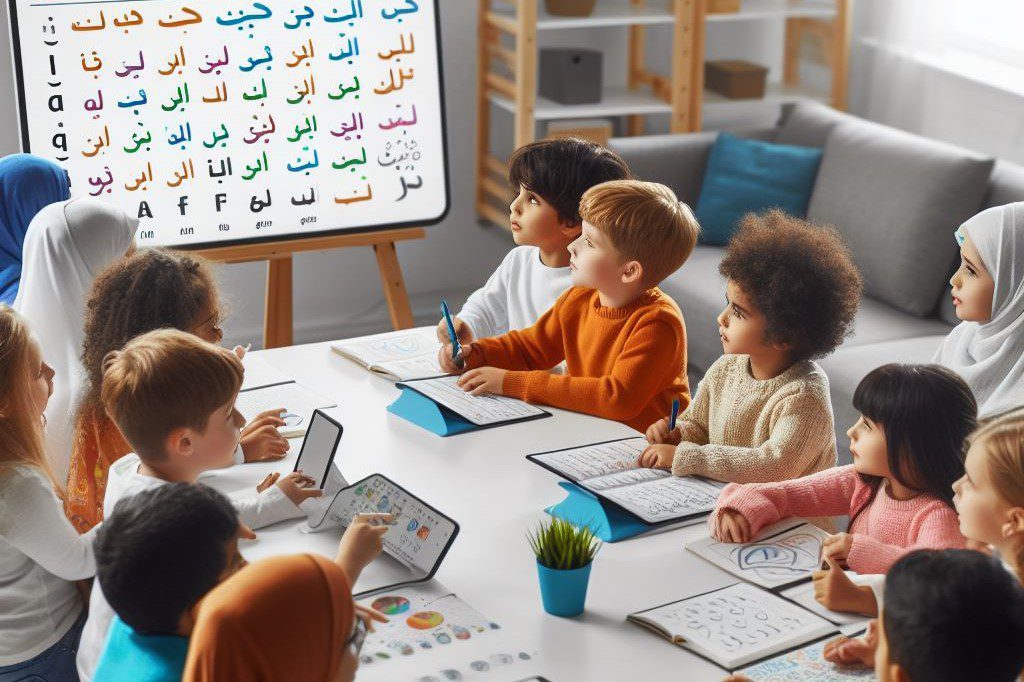Tajweed for Kids: Tips for Teaching Kids Quran Recitation Skills

Learning Tajweed for kids is not only the art of pronouncing the Quran but a spiritual endeavor deeply rooted in the Islamic tradition. Tajweed, the science of reciting the Quran with correct pronunciation, is revered as one of the fundamental aspects of Quranic education. For Muslim parents, and Quran teachers, imparting Tajweed to children is a responsibility and a privilege.
This post is designed to provide you with essential tips for making the process effective, engaging, and, most importantly, rewarding for your young learners eager to learn Quran recitation skills.
Understanding Tajweed
Before we jump into the tips, it’s vital for everyone involved to have a solid grasp of what Tajweed means and why it is so crucial in Islamic education. The term ‘Tajweed’ linguistically means ‘proficiency’ or ‘doing something well.’ For Quranic recitation, Tajweed involves observing the rules that apply to every letter in the Arabic language and the manner of articulation and the characteristics of each letter.
Tajweed is significant because it preserves the message of the Quran in its original form and ensures that the meaning is not distorted. Every Muslim is expected to recite the Quran with Tajweed, making it a basic requirement for any child’s Islamic education.
Tips for Teaching Tajweed to Children
1.Start with Basics
The road to Tajweed begins with a strong foundation in the Arabic alphabet and pronunciation. Before introducing the complex rules, ensure that children are confident with each letter’s sound and script. Use familiar objects and sounds to associate with each letter. For instance, ‘seen’ can be linked to the hissing sound of a snake, or ‘ta’ to the sound of a ticking clock. This kinesthetic learning technique can help in faster and lasting memorization.
2. Use Age-Appropriate Strategies
Teaching children Tajweed requires smart and gentle approach. Adapt your teaching to the child’s age, ensuring it’s not too complex for them to grasp. Kids may benefit from learning with songs, visuals, and storytelling rather than in-depth discussions and rationale behind Tajweed rules. Make it simple to learn Tajweed rules for kids.
3. Incorporate Fun Learning Activities
Make Tajweed learning enjoyable by incorporating various activities. Break down the lesson into interactive segments. You can use colored letters to distinguish the attributes of each letter. You also can design fill in the blanks, cross matching or multiple choice questions where they can find, match or choose the correct rules. By this, you are not just teaching Tajweed–you are creating an engaging environment to learn Tajweed for kids that makes the learning more memoizable and enjoyable.
4. Practice with Short Surahs
Choose short surahs such as Al-Fatiha, Al-Ikhlas, and An-Nas to start with. These surahs are of the right length for children and are often repeated in daily prayers, making them instantly recognizable. Regular practice with shorter surahs make easy to recite the Quran with Tajweed for kids confidently.
5. Use Visual Aids and Technology
Incorporate visual aids such as color coded letters chart and tables to demonstrate letters and rules. Today, several apps and online resources help teach children to recite the Quran with Tajweed. Utilize these tools to keep the learning experience modern and interactive.
6. Encourage Recitation in a Focused Environment
Tajweed demands focus which can be easily lost in noisy environments. Ensure the recitation sessions are calm and focused. Dedicate a special area in your home for Quranic recitation, and make it a peaceful space. It will make easy to practice Tajweed for kids.
Resources for Learning Tajweed for Kids
For the most effective Tajweed education, both parents and educators need all the help they can get. Here are some resources that can further assist in the teaching and learning process:
- Tajweed Books for Kids: Consider using well-illustrated Tajweed books like ‘Jadeed Tajweedi Qaida’ designed specifically for children to make learning and teaching easier.
- Online Platforms: Websites and Online Quran Academies like ‘Knowledge Quran Academy’ offers specific courses and Tajweed classes for kids, designed for learning Tajweed for kids.
- Apps: Apps like ‘TajweedMate’ is great tool for interactive learning and convenient practice sessions to learn Tajweed for Kids.
For more dynamic and effective learning experience, start your journey to learn Quran online with Tajweed for kids and adults.
Conclusion
Teaching Tajweed to children is a noble pursuit that requires dedication and creativity. By investing time and effort into your child’s or students’ Quranic recitation, you are not only providing them with a valuable skill but also encouraging a deeper understanding and connection to the words of Allah. Patience, practice, and innovative teaching methods are key to instilling Tajweed into the hearts of our youth.
Remember, the goal is not just to perfect recitation but to instill love, respect, and awe for the Quran in the young ones. And when it is taught with such a mindset, it brings excellence in Tajweed for kids.









